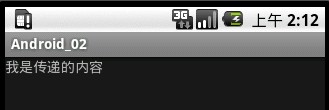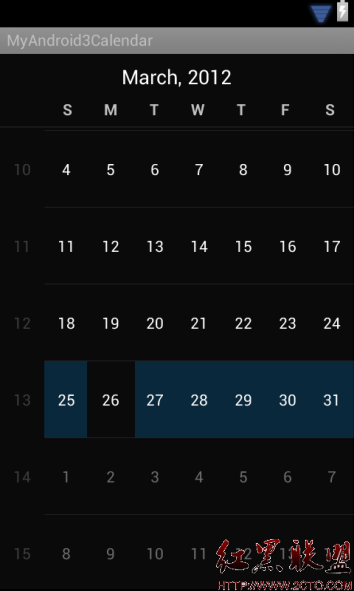Android Audio代码分析2 - 函数getMinBufferSize
AudioTrack的使用示例中,用到了函数getMinBufferSize,今天把它倒出来,再嚼嚼。
*****************************************源码*************************************************
static public int getMinBufferSize(int sampleRateInHz, int channelConfig, int audioFormat) {
int channelCount = 0;
switch(channelConfig) {
case AudioFormat.CHANNEL_OUT_MONO:
case AudioFormat.CHANNEL_CONFIGURATION_MONO:
channelCount = 1;
break;
case AudioFormat.CHANNEL_OUT_STEREO:
case AudioFormat.CHANNEL_CONFIGURATION_STEREO:
channelCount = 2;
break;
default:
loge("getMinBufferSize(): Invalid channel configuration.");
return AudioTrack.ERROR_BAD_VALUE;
}
if ((audioFormat != AudioFormat.ENCODING_PCM_16BIT)
&& (audioFormat != AudioFormat.ENCODING_PCM_8BIT)) {
loge("getMinBufferSize(): Invalid audio format.");
return AudioTrack.ERROR_BAD_VALUE;
}
if ( (sampleRateInHz < 4000) || (sampleRateInHz > 48000) ) {
loge("getMinBufferSize(): " + sampleRateInHz +"Hz is not a supported sample rate.");
return AudioTrack.ERROR_BAD_VALUE;
}
int size = native_get_min_buff_size(sampleRateInHz, channelCount, audioFormat);
if ((size == -1) || (size == 0)) {
loge("getMinBufferSize(): error querying hardware");
return AudioTrack.ERROR;
}
else {
return size;
}
} www.zzzyk.com
***********************************************************************************************
源码路径:
frameworks\base\media\java\android\media\AudioTrack.java
###########################################说明##############################################################
先把自带的注释拿来看看吧:
/**
* Returns the minimum buffer size required for the successful creation of an AudioTrack
* object to be created in the {@link #MODE_STREAM} mode. Note that this size doesn't
* guarantee a smooth playback under load, and higher values should be chosen according to
* the expected frequency at which the buffer will be refilled with additional data to play.
* @param sampleRateInHz the sample rate expressed in Hertz.
* @param channelConfig describes the configuration of the audio channels.
* See {@link AudioFormat#CHANNEL_OUT_MONO} and
* {@link AudioFormat#CHANNEL_OUT_STEREO}
* @param audioFormat the format in which the audio data is represented.
* See {@link AudioFormat#ENCODING_PCM_16BIT} and
* {@link AudioFormat#ENCODING_PCM_8BIT}
* @return {@link #ERROR_BAD_VALUE} if an invalid parameter was passed,
* or {@link #ERROR} if the implementation was unable to query the hardware for its output
* properties,
* or the minimum buffer size expressed in bytes.
*/
从注释可以看出,通过该函数获取的最小buffer size,只是保证在MODE_STREAM模式下成功地创建一个AudioTrack对象。
并不能保证流畅地播放。
1、参数就不说了,可以参考上面注释,上一篇文章中也有说。
2、定义了一个内部变量:
int channelCount = 0;
用来记录声道数量。
调用native函数native_get_min_buff_size时会用。
可见buffer size也是由native层来决定的。
3、接下来根据Channel类型,计算声道数量:
switch(channelConfig) {
case AudioFormat.CHANNEL_OUT_MONO:
case AudioFormat.CHANNEL_CONFIGURATION_MONO:
channelCount = 1;
break;
case AudioFormat.CHANNEL_OUT_STEREO:
case AudioFormat.CHANNEL_CONFIGURATION_STEREO:
channelCount = 2;
break;
default:
loge("getMinBufferSize(): Invalid channel configuration.");
return AudioTrack.ERROR_BAD_VALUE;
}
MONO都是1,Stereo的都是2。
不过,我们之前看过,Channel类型不止这几种。有以下一堆呢:
public static final int CHANNEL_OUT_FRONT_LEFT = 0x4;
public static final int CHANNEL_OUT_FRONT_RIGHT = 0x8;
public static final int CHANNEL_OUT_FRONT_CENTER = 0x10;
public static final int CHANNEL_OUT_LOW_FREQUENCY = 0x20;
public static final int CHANNEL_OUT_BACK_LEFT = 0x40;
public static final int CHANNEL_OUT_BACK_RIGHT = 0x80;
public static final int CHANNEL_OUT_FRONT_LEFT_OF_CENTER = 0x100;
补充:移动开发 , Android ,




